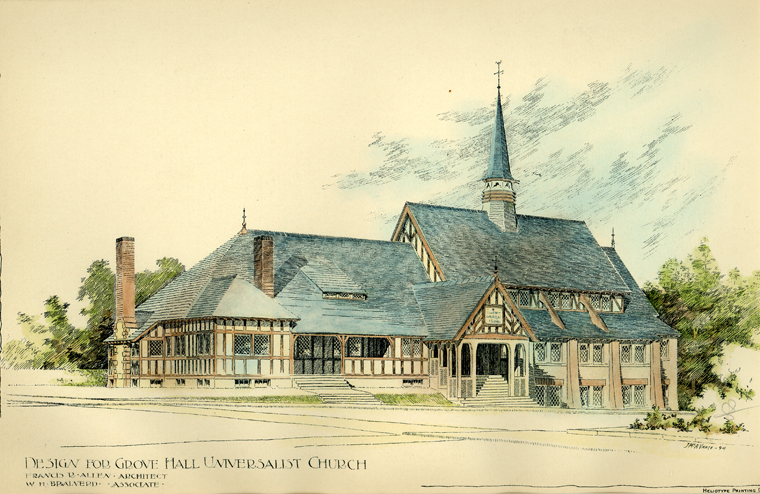
Grove Hall Universalist Church, Dorchester Illustration 2625
Holy Tabernacle Church is located at 70 Washington St. This section of Washington Street is between Columbia Road and Blue Hill Avenue.
The illustration of the church building is from American Architect and Building News, June 20, 1894.
The society that built the church was the Grove Hall Universalist Church. Architect Francis R. Allen and his associate W. H. Brainerd designed the building.
The following is from Parish Register of the Grove Hall Universalist Church, Dorchester, Massachusetts and Favorite Recipes, 1913.
“The Grove Hall Universalist Church came into existence March 3, 1878, being an off-shoot of the Roxbury Universalist Church, and in its inception received the cordial support of that parish. On January 9, 1878, a meeting was held at the residence of Mr. Franklin S. Williams for the purpose of organizing a church.
Starting as a mission church, holding its first or preliminary meetings at the residents of various interested persons, it soon wanted a centrally located temporary home, and began holding its meetings in Wetherell Hall, at or near the junction of Washington Street and Blue Hill Avenue. That served its needs for a time, but the desire for a home having more the churchly appearance prevailed, and the church on the corner of Blue Hill Avenue and Schuyler Street was built.
This amply served the purposes of the society until about 1892, when the subject of a new larger church was agitated, resulting in the building of the present edified. At about this same time it also ceased to be a mission church, and since then has been able to maintain services without calling upon the state Convention for aid.
The present edifice was completed in 1895, and cost, furnished, about $45,000: $25,000 of this was provided for by a mortgage; the balance was raised by canvassing our parishioners. To our good member, kind and generous neighbors, Mr. and Mrs. Ivers W. Adams, we are largely indebted, both for their liberality in subscribing for the building and in their continued liberality in contributing to the wiping out of the mortgage debt, which has lately been accomplished and made possible largely through their instrumentality.”
